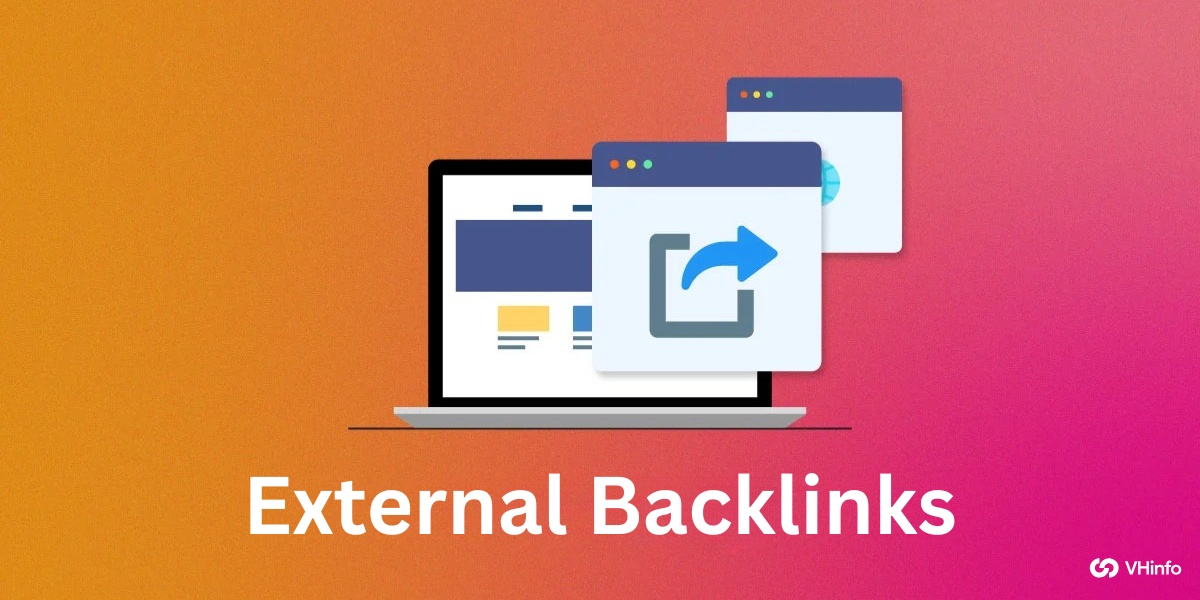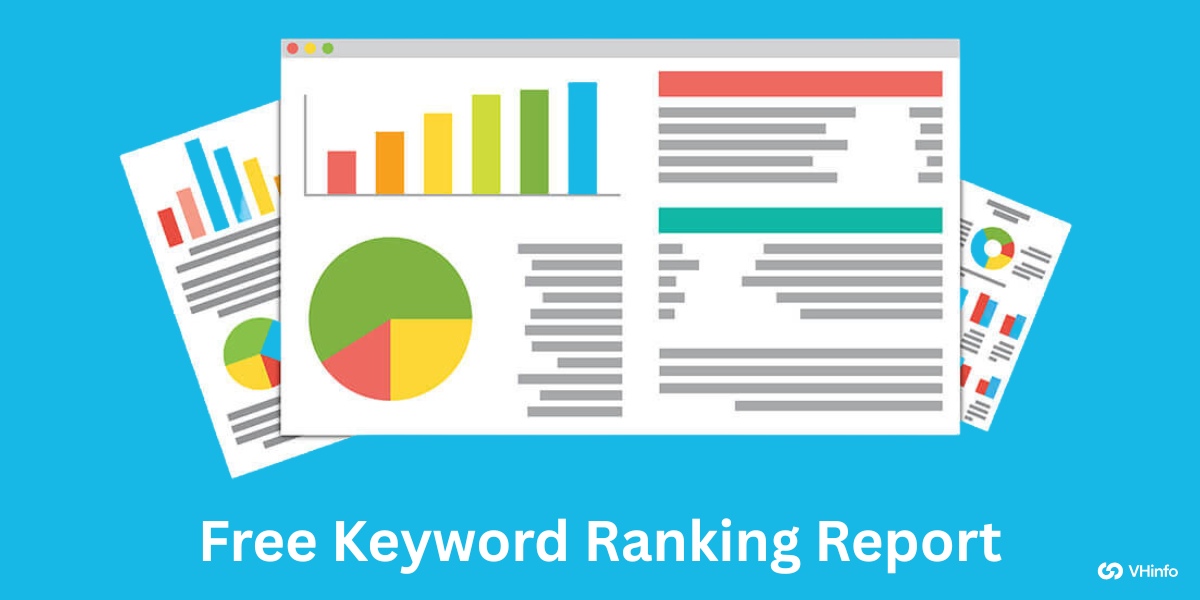Is your brand image starting to feel a little stale? Does your current brand identity no longer accurately reflect your company’s vision?
If so, it might be time for a brand refresh. A brand refresh is a strategic process of updating visual elements and messaging to revitalize a brand’s image and maintain a competitive edge.
As a SaaS link building company, VH-info understands the importance of staying current and relevant in today’s dynamic market.
This guide will provide business owners with a complete overview of what a brand refresh entails, why it’s important, and how to execute a successful brand refresh. We’ll cover everything from understanding your target audience to updating your logo design.
Implementing a thoughtful brand refresh strategy can breathe new life into your brand story, attract new customers, and strengthen your connection with your existing customer base.
What is a Brand Refresh?

A brand refresh involves updating specific brand elements to make your brand’s image feel current and relevant without undertaking a complete overhaul.
Unlike a complete rebrand, which involves changing the brand name, core values, and brand positioning, a brand refresh focuses on refining the existing brand identity.
This might include updating the logo design, refining the color palette, adjusting the tone of voice, or modernizing marketing materials. A good logo maker can make this easier by helping you quickly explore fresh, professional logo concepts that align with your evolving brand identity. The goal is to maintain brand recognition while injecting new branding that resonates with your target audience and reflects the brand’s future.
For businesses looking to optimize their online presence during this process, using tools like Link Explorer can provide insights into backlink profiles and domain authority metrics that influence SEO success.
Why is a Brand Refresh Important?

A brand refresh can be a valuable opportunity for businesses to stay competitive and relevant.
Here are several reasons why a successful refresh is important:
- Create ‘Buzz’: A brand refresh announcement examples can generate excitement and attention around your own brand. It signals that your company is evolving and responsive to market changes, creating a positive buzz among potential customers.
- Increase Sales: By modernizing your brand image and messaging, a brand refresh can attract new customers and re-engage existing ones, leading to increased sales. An updated logo and a refreshed brand can make your offerings more appealing.
- Raise Prices: A successful brand refresh :can justify raising prices by increasing the perceived value proposition of your products or services. When your brand’s image reflects quality and innovation, customers are often willing to pay more.
- Improve Customer Retention: A brand refresh shows your customer base that you’re invested in staying relevant and meeting their evolving needs. This can strengthen customer loyalty and improve retention rates.
- Attract Top Talent: A modern and appealing brand identity can help attract top talent to your company. Candidates are often drawn to brands that demonstrate innovation and a strong company’s vision.
- Get More Funding: Investors are more likely to fund companies with a strong and current brand image. A brand refresh can signal to investors that your company is forward-thinking and committed to growth.
The Benefits Of Refreshing Your Brand Identity

Refreshing your brand identity offers numerous benefits that can significantly impact your business’s success:
- Remain Relevant: The marketplace is constantly changing, and a brand refresh helps you stay relevant by adapting your brand strategy to current trends and customer expectations.
- Get In Front of a New Audience: A brand refresh can help you reach new market segments by updating your messaging and visual elements to appeal to a broader target audience.
- Realign With Your Brand’s Values: As your business evolves, your core values may shift. A brand refresh allows you to realign your brand identity with these updated values, ensuring authenticity and resonance.
- Fresh Visual Identity and Focused Message: An updated logo, color palette, and tone of voice can create a fresh and compelling visual identity. A brand refresh also provides an opportunity to refine your messaging and ensure it’s clear, consistent, and persuasive.
- Stronger Marketing Campaigns: With a refreshed brand, your marketing strategies can become more effective. New branding and messaging can lead to more engaging campaigns that drive results.
Key Elements of a Brand Refresh
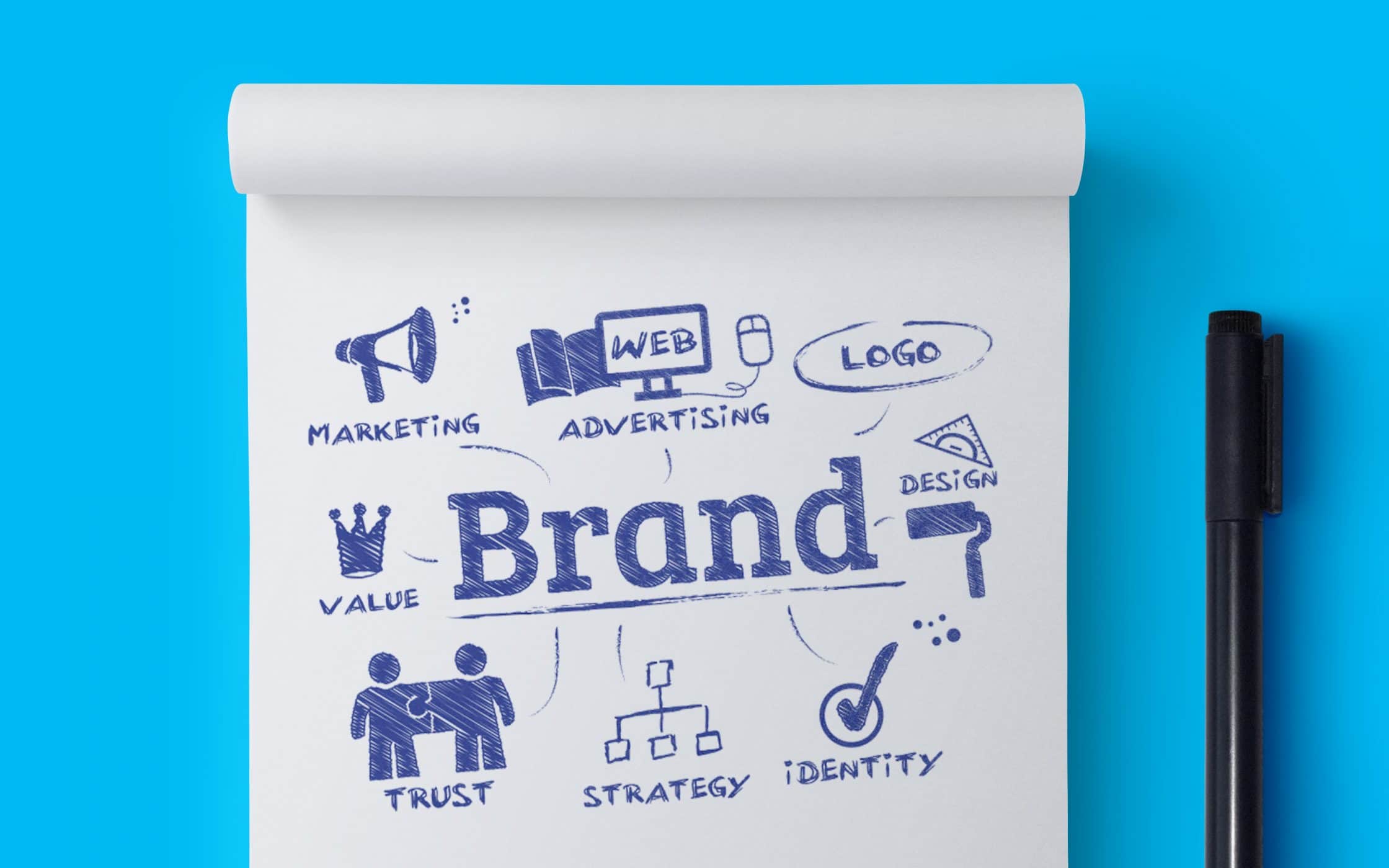
A brand refresh involves several key elements that work together to revitalize your brand’s image:
- Logo and Visual Identity Updates: Updating your logo design and other visual elements such as typography and imagery is often the first step in a brand refresh. The goal is to create a new look that feels modern and reflects your brand personality.
- Messaging and Tone Refinement: Refining your brand voice and messaging ensures that your communications are clear, engaging, and aligned with your brand values. This includes reviewing your verbal language and tone of voice across all marketing materials.
- Updating Color Palette and Typography: Choosing a new color palette and typography can significantly impact the feel of your brand. The updated logo should reflect the main characteristics you want to convey.
- Revising Marketing Materials and Website Design: Updating your marketing materials and website design ensures that all brand elements are consistent and aligned with the refreshed brand. This includes brochures, business cards, social media profiles, and your website.
During this process, employing strategies like Link Reclamation can help recover lost backlinks caused by redesigns or URL changes.
How Do You Know If You Need A Brand Refresh?

Several indicators suggest that your current brand identity may need a brand refresh:
- Lack of Message Consistency: Inconsistent messaging across different channels can confuse your target audience and weaken your brand image.
- Seeking to Boost Social Media Engagement: If your social media engagement is declining, a brand refresh can help revitalize your online presence and attract more followers.
- Targeting a Different Audience Segment: If you’re trying to reach a new market segment, your current brand may not resonate with them. A brand refresh can help you tailor your brand identity to appeal to this new target audience.
- Planning to Raise Your Prices: As mentioned earlier, if you’re planning to raise your prices, a brand refresh can help justify the increase by enhancing the perceived value of your offerings.
- Declining Sales and the Need to Resolve It: If your sales are declining, a brand refresh can help re-energize your brand image and attract potential customers.
- Looking to Stay Relevant in the Marketplace: Staying relevant is important in today’s fast-paced market. A brand refresh ensures that your brand’s image remains current and competitive.
10 Ways to Know if You Need a Brand Refresh

Here are ten specific signs that it might be time for a brand refresh:
- Your Logo Isn’t Flexible: If your logo design looks outdated or doesn’t work well across different platforms, it may be time for an update.
- Design Matters More Than Brand Experience: If your marketing strategies focus too much on aesthetics and neglect the brand experience, a brand refresh can help you create a more cohesive and engaging brand experience.
- Your Brand Messaging Isn’t Working: If your brand messaging isn’t resonating with your target audience, it’s time to refine your verbal language and tone of voice.
- Your Brand Identity Is Visually Inconsistent: Inconsistent use of brand elements can weaken your brand image. A brand refresh ensures that your visual identity is consistent across all channels.
- Your Packaging Is Outdated: Outdated packaging can make your products look less appealing. Updating your packaging can attract new customers and boost sales.
- Your Brand Identity Looks Like Your Competition: If your brand identity is too similar to your competition, you risk blending in. A brand refresh can help you establish a unique position.
- It Doesn’t Reflect Your Values: If your current brand identity doesn’t reflect your brand values, it’s time for a brand refresh.
- You Follow Too Many Design Trends: Relying too heavily on design trends can make your brand’s image look dated quickly. Focus on creating a timeless visual identity that reflects your core values.
- Your Brand Is Expanding: If your brand is expanding into new markets or offering new products/services, a brand refresh can help you align your brand identity with these changes.
- You Don’t Have a Brand Style Guide: A brand style guide ensures consistency in your branding. If you don’t have one, a brand refresh is a good time to create one. The brand guidelines are important.
When Is The Right Time To Do A Brand Refresh?
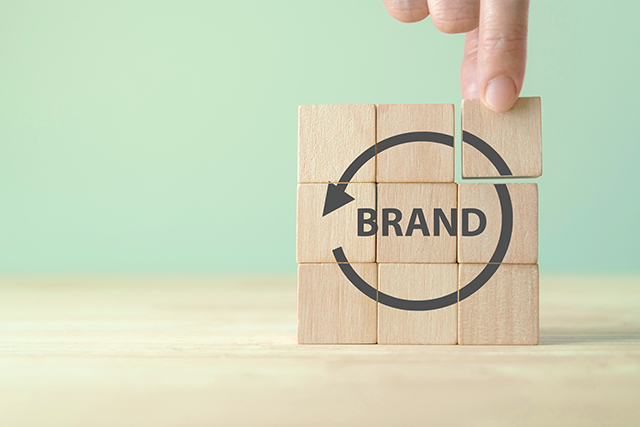
Timing is key when it comes to a brand refresh.
Here are some situations where it makes sense:
- Your Brand Feels Outdated: If your brand’s image feels outdated, it’s time for a brand refresh.
- Your Brand is Inconsistent: Inconsistency weakens your brand image. A brand refresh can help you create a cohesive brand identity.
- You’re Facing Increased Competition: In a competitive market, a brand refresh can help you stand out and maintain your competitive edge.
- Your Marketing is Underperforming: If your marketing strategies are underperforming, a brand refresh can inject new life into your campaigns.
- You’re Looking to Appeal to New Audiences: If you’re trying to reach new market segments, a brand refresh can help you tailor your brand identity to appeal to them.
Brand Refresh Checklist

A brand refresh checklist ensures that you cover all the essential steps in the process:
- Begin With Market Research and Competitive Analysis: The first step, dive into market research and see what your competition is doing. Understand your target audience’s needs and how your brand positioning fits in. This helps you make smart choices for your brand’s future.
- Give Your Visual Identity A Lift — Not An Entirely New Look: Update your visual elements without a complete overhaul. Refresh your logo design, color palette, and typography to give a new look while keeping your brand recognition. This ensures a successful brand refresh without losing your core identity.
- Approach Your Brand Messaging With Emotional Appeal: Create your brand messaging to connect with your potential customers on an emotional level. Use your brand story and tone of voice to create a brand experience that resonates. Focus on their desires to boost social media engagement.
- Audit Important Content and Collateral Before Rollout: Review all your marketing materials, website, and social media content before launching the refreshed brand. Check for consistency in your brand voice, visual elements, and messaging.
- Execute Your Brand Refresh With An Implementation Plan: Have a solid plan to roll out your brand refresh. Set timelines, assign tasks, and coordinate your internal team. A well-managed launch ensures your brand’s image shines and achieves a successful refresh.
Brand Refresh Strategy

To create a successful brand refresh strategy:
- Determine if You Need a Brand Refresh or a Rebrand: The first step is figuring out if you need a brand refresh, which is a moderate update of visual elements and messaging, or a complete rebrand, which is a complete overhaul of your brand identity. Consider if your core values have changed, or if your brand positioning needs a major shift.
- Brainstorm With Your Team To Envision What They Want The Company To Become: Get your internal team involved. Discuss what the company’s vision is for the brand’s future and how you want the brand personality to be seen. This creative expression will help align everyone on the goals of the refreshed brand.
- Use Social Media to Communicate With Your Audience: Social media is great for engaging with your target audience. Share updates about your brand refresh announcement examples, gather feedback, and show how the new branding will benefit them. It also can shape the brand’s image.
- Consider Your Audience’s Emotions Or Desires in Your Strategy: Think about what your potential customers want and feel. Tailor your brand messaging, tone of voice, and marketing materials to connect with them on an emotional level. This approach can help you create a stronger brand experience.
- Implement The Changes Slowly: Avoid overwhelming your customer base with too many changes at once. Introduce the updated logo, color palette, and other brand elements gradually. This allows your audience to adapt to the new look and feel of your brand smoothly.
What Should A Brand Refresh Strategy Include?
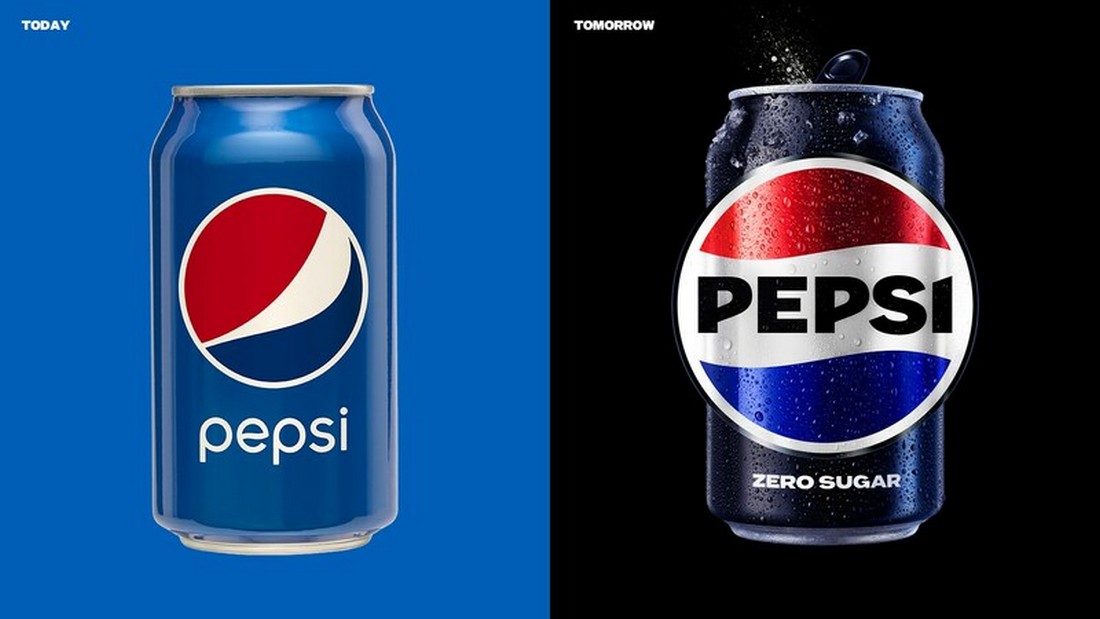
Here’s what a brand refresh strategy should include:
- A Good Team In Charge: Put together a skilled internal team or hire a branding agency to lead the brand refresh. This team should include members with expertise in logo design, graphic design, marketing strategies, and verbal language.
- A Deep Brand Audit: Conduct a thorough examination of your current brand identity. Evaluate your brand recognition, brand equity, brand positioning, and market share. This first step will help you understand what’s working and what needs improvement in your current brand.
- A Brand Refresh Brief: Develop a detailed document outlining the goals, objectives, and scope of the brand refresh. The brand refresh brief should also define the target audience, key messages, and visual elements that will guide the creative expression process.
- A Holistic Brand Refresh Launch: Plan a comprehensive launch to introduce the refreshed brand to your customer base and potential customers. This could include updating your marketing materials, website, social media profiles, and brand story.
- A Monitoring and Evaluation Strategy: Implement a system to track and measure the success of the successful brand refresh. Monitor key metrics such as website traffic, social media engagement, sales, and brand image to assess the impact of the new branding.
How Do You Successfully Refresh A Brand?

To successfully refresh a brand, here are key steps to take:
- Understand Current Brand Perceptions: You need to know how your target audience sees your current brand. Research their views on your brand image, value proposition, and brand personality. Use surveys, social media, and feedback to understand the elements of your brand and perceptions.
- Redefine Brand Strategy: Make sure your brand strategy aligns with your company’s vision and goals. Update your brand positioning to stand out in the market, and clarify your brand story. This might involve revisiting your core values to make sure the brand’s image is consistent.
- Redesign Brand Identity: Refresh your visual identity to show the refreshed brand. This can include updating your logo design, color palette, and other visual elements. The goal is to create a new look that feels modern and appeals to your target audience.
- Reactivate the Brand: Get your target audience excited about your new brand. Use fresh marketing strategies and messaging to re-engage them. This could involve launching new campaigns, updating your website, and being active on social media to build a stronger brand experience.
Brand Refresh Examples

Several well-known brands have successfully executed brand refreshes:
Starbucks

Starbucks underwent a significant brand refresh by simplifying its logo to focus solely on the iconic siren, removing the wordmark and surrounding elements. This modernized look emphasizes the brand’s global appeal and aligns with its strategy to expand beyond coffee into other beverages and food products. The streamlined design reflects Starbucks’ commitment to creating a strong brand identity that resonates worldwide while maintaining its core values.
Burger King

Burger King launched its “Reclaim the Flame” campaign, investing $400 million in a comprehensive brand refresh. The new logo embraces a minimalist design reminiscent of its vintage branding, appealing to younger audiences like Gen Z and Millennials.
Alongside visual updates, Burger King revamped its packaging, staff uniforms, and menu offerings, focusing on quality and sustainability while retaining its quirky personality.
Mastercard

Mastercard refreshed its logo for the first time in 20 years, retaining the recognizable overlapping red and yellow circles but updating the design for digital use.
The new sans-serif typeface enhances readability while dropping the word “Mastercard” in some contexts allows the logo to stand alone as a powerful symbol.
This change reflects Mastercard’s evolution into a digital-first brand while maintaining consumer trust through familiarity.
Southwest Airlines

Southwest Airlines introduced a heartfelt redesign that included a new logo featuring a heart motif, symbolizing its commitment to customer service. The refresh aimed to modernize the airline’s look while preserving its core values of friendliness and reliability.
Along with visual changes, Southwest updated its signage, marketing materials, and even its aircraft interiors to create a cohesive brand experience across all customer touchpoints.
Dunkin’

Dunkin’ rebranded by dropping “Donuts” from its name in 2018, reflecting its transformation into a full-service coffee and quick-bite destination.
The refreshed logo maintained the signature orange and pink colors but simplified the design for better communication with its broader audience. This strategic move allowed Dunkin’ to showcase its diverse menu while retaining loyalty from long-time customers.
Zenefits

After facing significant challenges, Zenefits undertook a brand refresh to improve its market perception. The company engaged with customers and focus groups to reshape its narrative while keeping its name.
This refresh included updates to their logo and messaging, aiming to regain trust and awareness in the HR technology space after past compliance issues.
Yakkety Yak’s

Yakkety Yak’s marketing agency executed a successful brand refresh that involved modernizing their visual identity while keeping their playful brand essence intact.
By updating their logo and marketing materials, they aimed to connect better with contemporary audiences without losing their unique charm. This approach demonstrates how a thoughtful refresh can maintain brand recognition while appealing to new customers.

Instagram’s recent rebranding introduced an illuminated gradient and new typeface that reflects the platform’s evolution since its last update in 2016. The fresh design maintains familiarity while embracing modern aesthetics, ensuring it resonates with users worldwide.
This update highlights Instagram’s commitment to staying relevant in an ever-changing digital landscape.
Brand Refresh Vs. Rebrand: The Major Differences
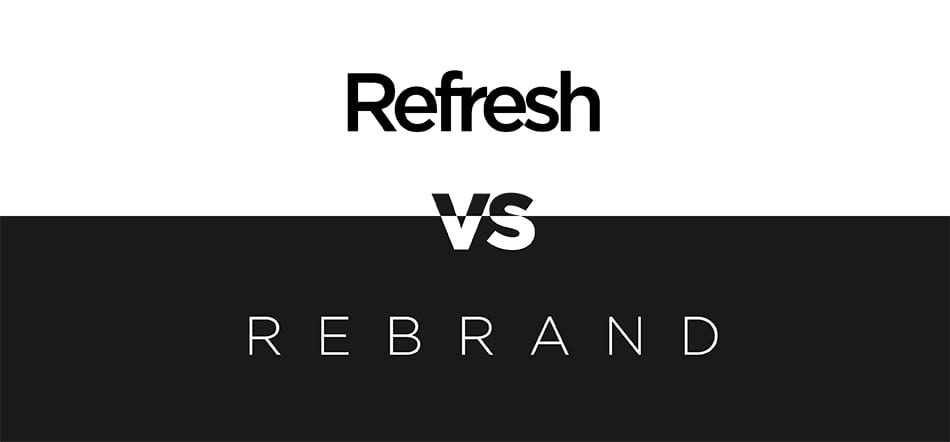
| Feature | Brand Refresh | Rebrand |
|---|---|---|
| Scope | Minor updates to visual elements and messaging | Complete overhaul of brand identity |
| Core Identity | Preserves core identity | Changes core values, mission, and vision |
| Objectives | Stay relevant, appeal to new target audiences | Change brand positioning and market share |
| Logo design | Updated logo or slight modification | Entirely new logo |
FAQ’s:
How Often Should You Refresh Your Brand?
There’s no set rule, but most branding agency experts suggest thinking about a brand refresh every 5-7 years. It depends on how fast your industry changes and how well your current brand identity connects with your target audience.
If your brand’s image feels outdated or isn’t engaging new potential customers, it might be time for a new look.
Can a Small Business Afford a Brand Refresh?
Absolutely! A brand refresh doesn’t need to cost a fortune. Small business owners can begin with small changes to their logo design, marketing materials, or social media presence.
Focus on what will give you the most impact for your budget, like updating your brand messaging or visual elements to attract new customers.
What Role Does Social Media Play in a Brand Refresh?
Social media is a super useful tool during a brand refresh. It helps to announce changes, gather feedback, and connect with your target audience. By sharing your brand story and new branding on social media, you can engage followers and build excitement for the refreshed brand.
How Do You Ensure Your Audience Responds Positively to a Brand Refresh?
Talk about the reasons behind the brand refresh openly and clearly.
Focus on how the changes will benefit your customer base and enhance their brand experience. Get your internal team involved, listen to feedback, and show that you’re evolving to better meet their needs and desires.
Conclusion
A brand refresh is a powerful tool for staying relevant, attracting new customers, and strengthening your connection with your existing customer base. Updating your visual elements, refining your messaging, and staying true to your core values can ensure that your brand’s future remains bright.
VH-info, your trusted SaaS link building company, encourages you to take the first step in revitalizing your brand today. A carefully executed brand refresh can breathe new life into your brand story, boost your brand equity, and solidify your unique position in the market.

